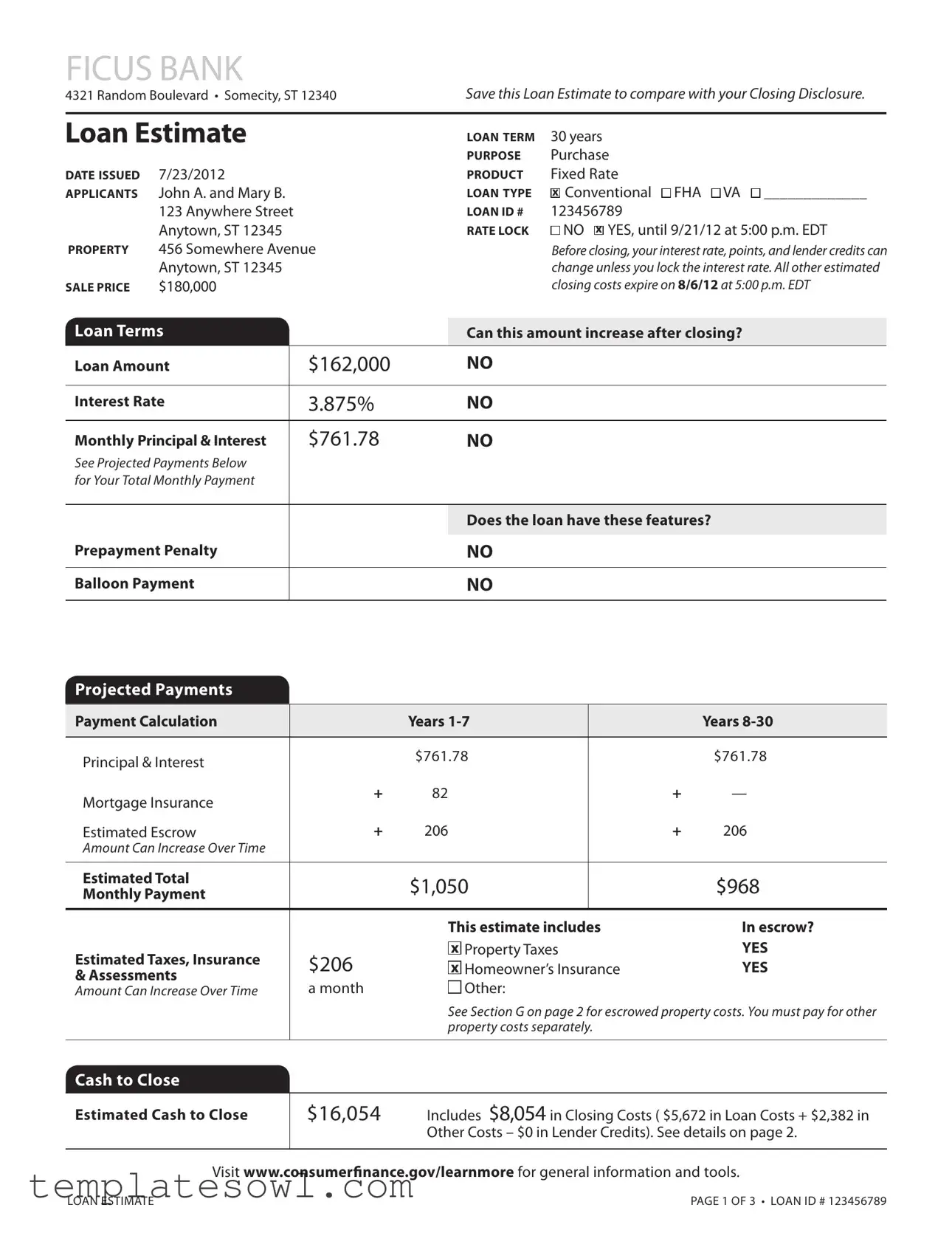What is a Loan Estimate form?
A Loan Estimate form is a document that lenders must provide to you within three business days of receiving your mortgage application. It outlines the key features of your loan, including estimated interest rates, monthly payments, and closing costs. This form helps you understand the financial aspects of your mortgage so you can make informed decisions.
Why is the Loan Estimate form important?
The Loan Estimate is important because it gives you a clear overview of what to expect from your loan. It allows you to compare offers from different lenders, ensuring you find the best terms and costs. By saving this form, you can also compare it with your Closing Disclosure, which you will receive before closing on your home.
Can the loan amount increase after closing?
No, the loan amount cannot increase after closing. The amount listed in the Loan Estimate reflects the total you'll be responsible for when fulfilling your loan agreement. However, other costs related to your mortgage may change over time.
What does the estimated monthly payment include?
The estimated monthly payment includes principal and interest, as well as any mortgage insurance and property taxes. You may also have additional costs like homeowner’s insurance that are accounted for in the escrow. The Loan Estimate provides a total monthly payment to help you budget effectively.
How can I lock my interest rate?
You can lock your interest rate by contacting your lender and requesting a rate lock. If your lender agrees, the interest rate will be secured for a specified period, which means it won’t change before closing, regardless of market conditions.
What happens if my monthly payment is late?
If your monthly payment is more than 15 days late, a late fee of 5% of your principal and interest payment will be charged. It's crucial to keep track of your payment dates to avoid these additional costs.
Can I sell my home and transfer the loan?
Yes, you can sell your home, and under certain conditions, the new buyer may assume your loan on the same terms. However, not all loans allow this feature, so you should review your Loan Estimate for specific terms regarding assumption.
Are there any prepayment penalties?
No, this loan does not have a prepayment penalty. That means you can pay off your loan early without incurring extra fees. This can be a beneficial option if you decide to pay off your mortgage ahead of schedule.
What are lender credits?
Lender credits are amounts that the lender offers to help cover your closing costs. In the Loan Estimate provided, there are $0 in lender credits, which means you’ll need to cover the full estimated closing costs out-of-pocket.
Where can I get more information about my loan?
You can visit www.consumerinance.gov/learnmore for more information and resources related to your loan. This website provides educational materials that can help you better understand how mortgages work and what to expect during the loan process.



